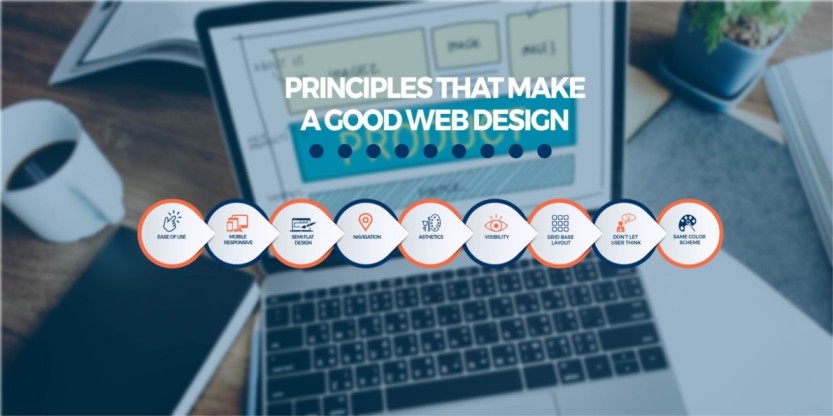The influential website design should convey a specific message, fulfil its intended function, and attract visitors. Therefore, Consistency, colours, typography, images, simplicity, and functionality are all factors that contribute to a good Web design and development.
When designing a website, a few key factors determine how the website is perceived. A well-designed website builds trust and encourages visitors to take action. To ensure a good user experience, you need to ensure that your website is optimized for usability (form and aesthetics) and usability (function).
Create a website for your business that you’re proud of Click Here
List of Good Website Design and Development Principles
Design and Functionality
Your website design reflects your business, products, services, and ultimately, your brand. Therefore, it must be visually appealing, refined, and professional. Leave white space, use a clear layout, and use high-quality photos and graphics to present your message. Therefore, broken, slow, or poorly structured areas frustrate visitors, causing them to abandon the site.
Ease of use
People visiting your website are always in a hurry. Don’t let them work for your message. Usability (UX) plays a vital role in ensuring that visitors use, understand, and stay on your website. Therefore, create a straightforward, logical, hierarchical navigation. Use a consistent layout across the whole website design, with visual cues for functionality.
Mobile Responsiveness
As more and more people use their mobile phones to surf the web, creating mobile-optimized websites is becoming more and more necessary.
The first step is to figure out how your existing website looks on mobile. You can do this with Google Mobile-Friendly Test. Therefore, if your website isn’t currently available on mobile, you can create a mobile version using our web-based mobile website builder.
Semi-flat Design
Flat design is simply defined as elements that do not contain or give the impression of three-dimensional space, such as shadows. Therefore, a flat website design makes it easier for users to understand, but it also makes a website load faster and doesn’t contain complex or overly-technical elements.
Many organizations, large and small, are moving from realistic skeletons to flat designs. However, companies like Uber have given their makeovers, adding subtle shadows and 3D effects.
Navigation
Navigation is the identification system on a website that helps visitors interact and find what they are looking for in a good Website design and development. It must be simple, intuitive, and consistent across pages. Therefore, the navigation on a website is the key to attracting visitors. If the navigation on your site is confusing, visitors will give up and look elsewhere to find what they need.
Aesthetics
Your website must be visually appealing on all devices in this day and age. However, you need to maintain your brand image. Therefore, your website design should reflect your kind of company and connect visually with your audience.
The visual appeal of your website increases not only your brand recognition but also your credibility.
Visibility
Even the most beautiful and user-friendly website is unsuccessful if it cannot be found. Therefore, presence and visibility are critical to the success of your website through digital marketing campaigns such as SEO, social media, and email marketing.
It’s essential to know how to get discovered, which platforms to target, and how to leverage your content. Therefore, there are thousands of factors that affect your search engine position, so you should plan.
Grid-Based Layout
Grids help you structure and organize your content. Grids help align and order elements on a page. Therefore, grid-based layouts place content in a clean, strict grid structure, with a balance of columns and sections giving a sense of order, resulting in an aesthetically pleasing website.
Don’t let Users think
According to Kruger’s First Law of Usability, a website should be obvious and self-explanatory. When creating a website, your job is to remove the question marks. Users should make conscious decisions.
Same Website Colour Scheme
Colour is essential to define the knowledge level of a website design. Users need to be able to scroll through pages to understand the content. Therefore, maintaining a consistent colour scheme is one of the most challenging tasks on the planet. Usually, there is a trade-off between colours. Sometimes, the colour you like doesn’t work for everyone else.
Try to choose colours that other people like. Therefore, Consistency is important here because some colours will work well with some text and some won’t. Research, test, and iterate until you get good feedback from users. It is also essential to develop a uniform colour scheme for your website. Don’t use a combination of colours. It is a bad idea. Request a demo



